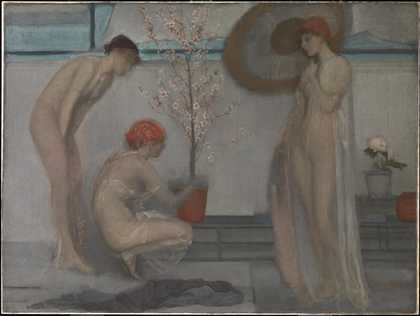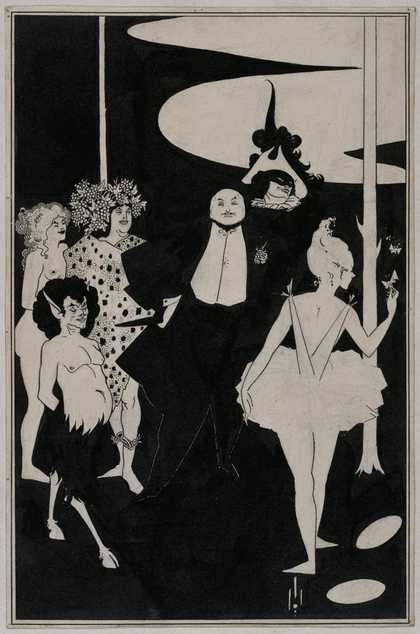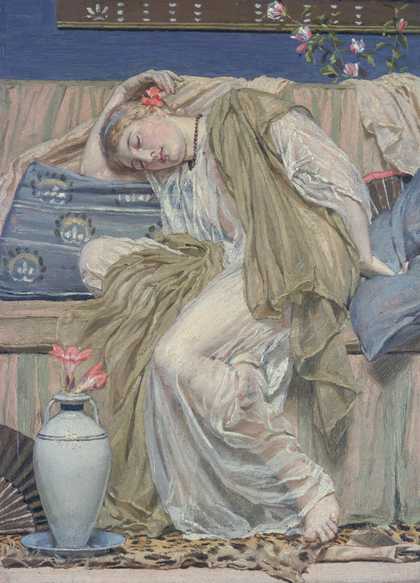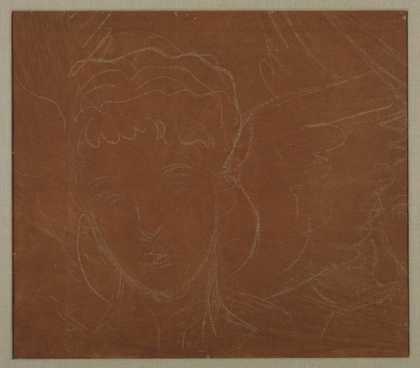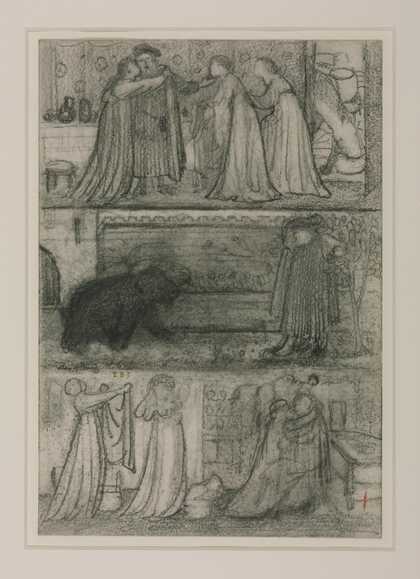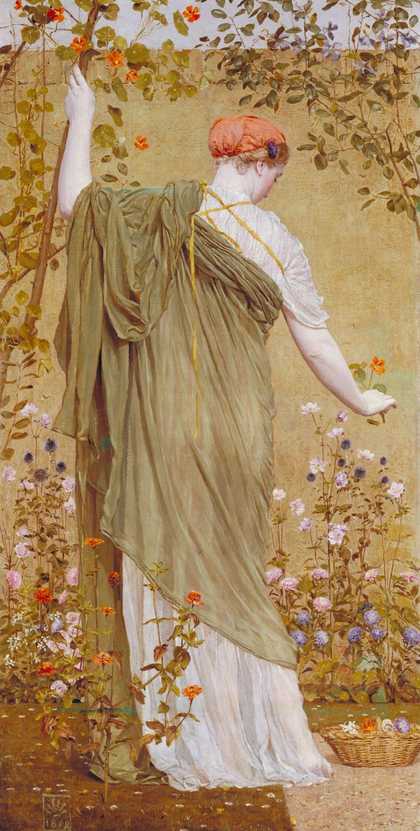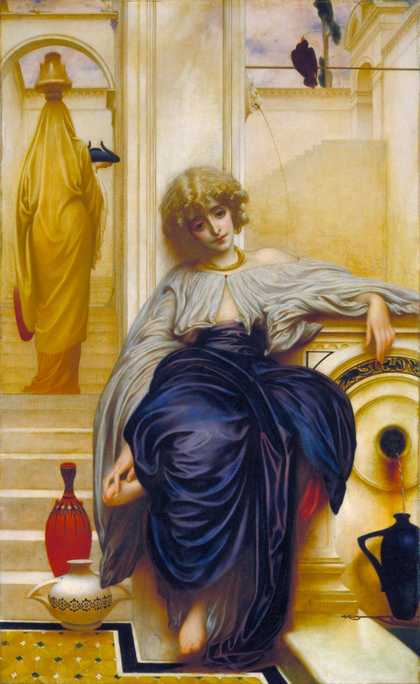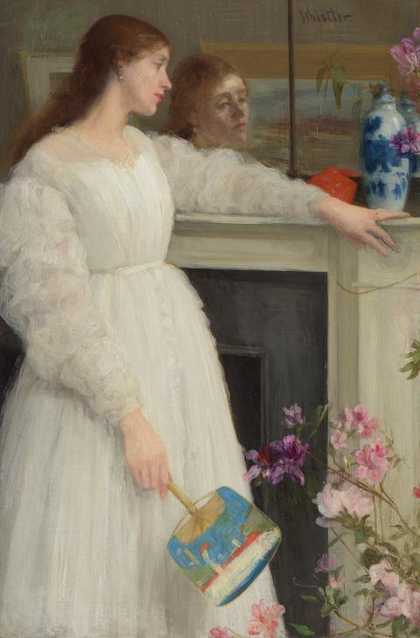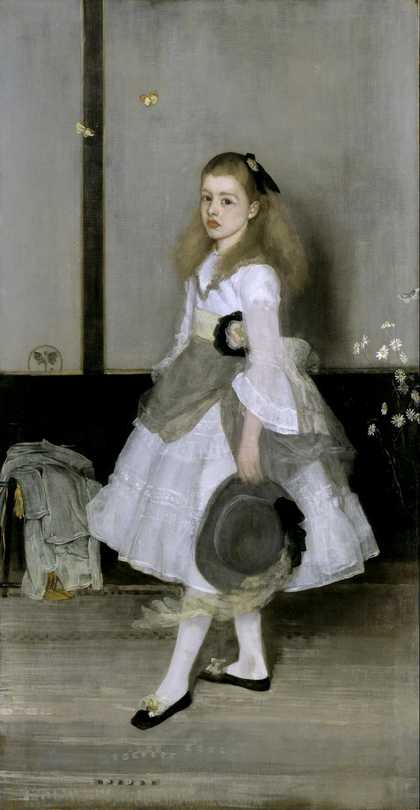
James McNeill Whistler
Harmony in Grey and Green: Miss Cicely Alexander (1872–4)
Tate
The aesthetic movement flourished in Britain in the 1870s and 1880s and was important equally in fine and applied arts.
In painting it is exemplified by James Abbott McNeill Whistler, Albert Moore and certain works by Frederic, Lord Leighton. Japanese art and culture was an important influence, especially on Whistler and aesthetic design.
In applied arts it can be seen as part of the revolution in design initiated by William Morris, with the foundation of Morris & Co in 1862. From 1875 the ideals of aestheticism were commercialised by the Liberty store in London, which later also popularised art nouveau.
Critic Walter Hamilton was the first writer to identify the movement, publishing The Aesthetic Movement in England in 1882. As well as writing about key figures associated with the movement, he also provides descriptions of contemporary responses to it.



